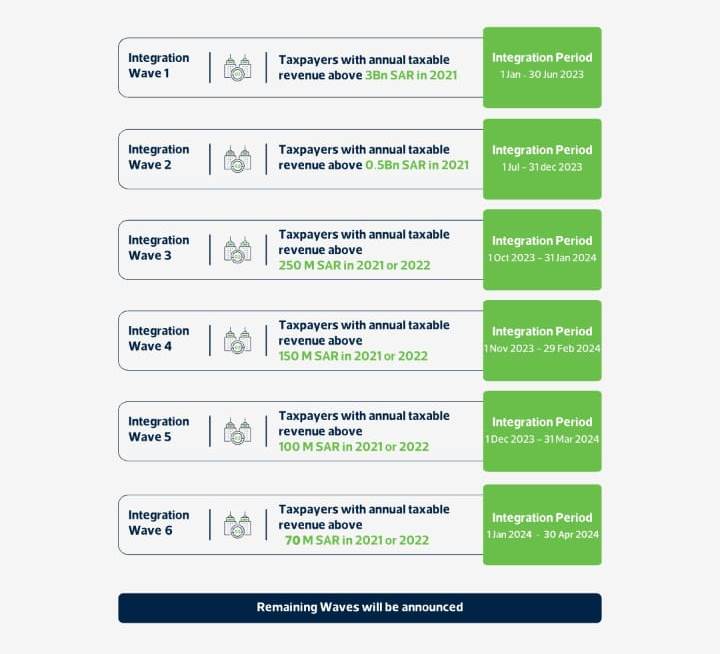Zatca Phase-2 E-Invoice
VAT has been implemented in the UAE and KSA from January 1st 2018,as mandated by the GCC. 5% VAT will be implemented on the supply of goods and services. It is mandatory for businesses to maintain books of records for a minimum of 5 years henceforth. Read on to get answers to any questions you may have related to VAT.
Zatca Phase-2 E-Invoice

Zatca E-Invoice Phase-2
Get Ready with E-Invoice before it is too late
Phase 2 (January 1, 2023): Integrating with the ZATCA system
This phase will be implemented in different stages for targeted taxpayer groups. Starting on January 1, 2023, you will have to integrate your e-invoicing solution with ZATCA’s system so you can send the e-invoices generated to the portal for verification and validation. Since this phase will be affecting different people at different times, you will be informed by ZATCA about the integration date at least 6 months before it affects you.
By this phase, you will need to issue e-invoices in specific formats (such as XML or PDF/A-3 format with embedded XML).
This phase will also have more technical requirements, so it’s best to have a system that has built-in compliance with ZATCA’s guidelines. Your system must be able to connect to external systems with APIs (Application Programming Interfaces), and generate a Universally Unique Identifier (UUID), a digital signature, a sequential number which differentiates each e-invoice, a hash, and a cryptographic stamp. Your system should also be equipped with anti-tampering features.
How the E-Invoicing process works in KSA
E-Invoicing isn’t so different from the usual invoicing process. It’s essentially the same process but conducted in a more efficient and secure manner.
Here’s what you must do for each transaction:
- Use a compliant E-Invoicing system to generate the e-invoice with all the required fields.
- Issue a copy to the buyer. By phase 2, you will need to push this invoice to ZATCA’s portal and get it validated before you send it to the buyer.
- Store the e-invoice in your system for future reference. Moving to a cloud-based solution that offers you E-Invoicing features will make storage easier and ensure compliance automatically.
Dos and Don’ts for Taxpayers
Do’s
If you are a taxpayer in KSA, you must select an E-Invoicing system, or find an invoicing provider that can configure their system to offer E-Invoicing solutions in compliance with ZATCA. Once you’ve selected a system and you know how to use it, test out the process before the enforcement date of December 4, 2021.
In most businesses, there may be more than one person handling accounts. Ensure that all of your invoicing staff are well-trained in using the E-Invoicing system, so they can be prepared to run transactions smoothly.
Don’ts
Once E-Invoicing comes into effect, you cannot issue hand-written or manual invoices.
While you are looking for an E-Invoicing system, avoid opting for a system that:
- Allows anonymous access.
- Has no user management capabilities.
- Permits e-invoices and associated notes to be edited or tampered with.
- Allows multiple e-invoice sequences to be created.
- Permits time changes or exporting the stamping key.
Avoid modifying invoices—instead, issue a debit/credit note and link it to the original invoice. Ensure you don’t delete any e-invoices once they’re issued, as they will be needed for future reference.
With our software that is ZATCA-approved, E-Invoicing is made even simpler! Keep yourself VAT compliant with ease and generate paperless e-invoices to manage your business while staying on top of all the guidelines issued.
These features aren’t mandated for phase 1 but are necessary by phase 2.
Zatca E-Invoice Phase-2
Zatca E-Invoice Phase-2
Get in Touch Now!

Explore Our Comprehensive Solutions!
Redirecting you to our ERP Software Solutions page where you can discover tailored solutions to streamline your business operations and drive growth. Click the button below to learn more and find the perfect ERP solution for your organization.

